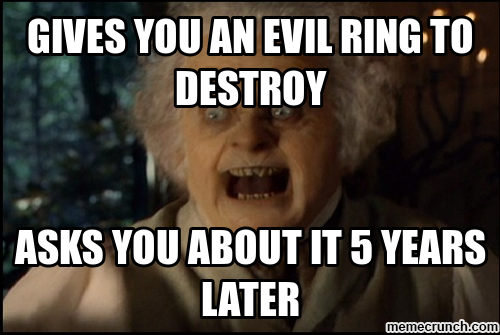You have fantastic ideas. You understand the problem and can see the whole picture forming perfectly inside your head. Synapses firing like Brad Cooper in Limitless, you open your mouth poised to release a sparkling cocktail of musical information, and…
Word vomit ensues.
As the last syllable passes your lips, a disinterested audience gazes back confused and mildly dazed. Ending a disconcerting silence, the closest VP begins pontificating about a really sharp website their neighbor just forwarded to them last night. While the table nods in agreement at this new stroke of genius, you ask yourself, “How did I let this happen?”

I assure you that the quality of your ideas is not to blame. Your audience was just never really engaged with your idea to begin with. Getting others to not only understand your cause, but also come along for the ride, does not come naturally to most of us. If you’re a designer who’s more introverted than extroverted (*cough* like me) it becomes even harder.
Storytelling in product development simply put, empowers you to engage and convince your audience of an idea. At this point you may start asking yourself, “Doesn’t this sound a lot like sales?”
Yuuuuuup.
The thing is, storytelling is not the exclusive dominion of salespeople. Storytelling is not always taught to most professionals, which is ironic since it’s one of the few skills applicable to almost every profession, including design. Storytelling is a skill that can quickly elevate a designer from being good to being great.
[KiwiClickToTweet tweet=”Storytelling is a skill that can quickly elevate a designer from being good to being great. #design” quote=”Storytelling is a skill that can quickly elevate a designer from being good to being great.”]
I’m going to share with you the 6-part storytelling framework that I have personally found great success with. This framework has been lifted heavily from people all over the internet who know more than me, and combined into what I’ve found to work the best.
The 6-Part Storytelling Framework
I find it easiest to empathize with an audience by phrasing each part of the framework as a question from their point of view. This helps position your audience not only as onlookers, but also as the hero of the story.
1. What’s going on?
Begin with an inevitable change that’s occurring, and the new reality it’s forging. Your audience is Harry Potter and you’re basically telling him that the threat of the Dark Lord has returned.

2. Why should I care?
Clearly define what stakes this change is creating. Define what it means to win, and what it means to lose. This is where you tease the opportunity for future rewards — the audience’s ultimate treasure. Imagine telling Bilbo Baggins about the stolen treasure hoarded by Smaug.
3. How do we get there?
Chart a path that will lead your audience on their quest to the ultimate treasure. In Star Wars, Obi-Wan Kenobi lays out Luke’s immediate path, telling him he’ll have to learn the ways of the force if he wants to dip out of Tatooine and head to Alderaan.
4. What is the ultimate problem?
Describe the climactic conflict that your audience must overcome on their quest to reach the final treasure. “Listen, Frodo, you’ve got to destroy this evil ring.”

5. Why do I need you?
Now it is time to reveal the special gifts you’re providing that will allow your audience to successfully travel the path laid out, and win the climactic conflict. “Oh by the way Frodo, you might want to keep that evil ring close by — it makes you invisible. There are definitely no side effects.”
6. Why should I trust you?
Your audience can’t be blamed for being skeptical of your gifts. Give them proof that only you can make this story come true. Whether you’re Gandalf, Dumbledore, or Yoda, the pattern is the same: You have the respect and trust of your hero’s (audience’s) peers because you’ve already done a quest like this before, and you possess strong magical skills not held by others.
The Rest Is Up to You
Depending upon the situation and context, some of these elements can be combined into others, or even removed entirely. While I use this model for design work, it can be applied easily to many other use cases.
This framework is directly related to a well-known storytelling pattern called the Hero’s Journey. We already know that each of these 6 parts position your audience as the hero, but in the context of the Hero’s Journey, they also position you as the story’s mentor.
If you’re selling — if you’re crafting a story — people need to believe you. You need to instill trust. And a hero’s mentor has that in spades.
Consider a project you’re working on right now. In 10 minutes, create a rough story outline by answering each audience question in the 6-part storytelling framework below:
- What’s going on?
- Why should I care?
- How do we get there?
- What is the ultimate problem?
- Why do I need you?
- Why should I trust you?
Now get out there and give this storytelling structure a try in the wild! Let me know how it works for you. Did this framework help you sell your ideas? Did it completely backfire? I want to hear about your experiences.
If you’re interested in diving deeper into storytelling (or sci-fi/fantasy epics), check out the Hero’s Journey. It is essentially the backbone of almost every book, movie, myth, or legend you’ve ever heard. A mythologist named Joseph Campbell first wrote about the monomyth, or Hero’s Journey, in 1949. Now days, you’ll see it everywhere — from modern television to Star Wars.